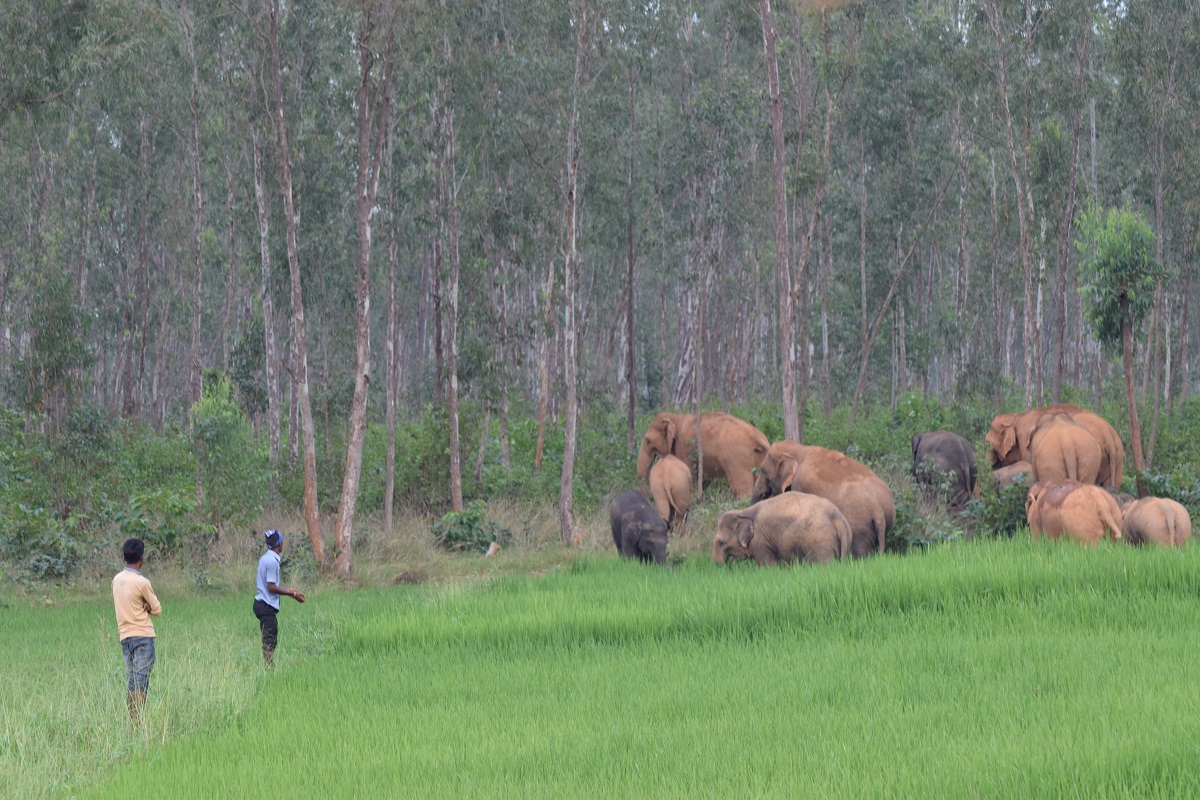PM Modi lauds Assam’s ‘Hathibandhu’ initiative in his Mann Ki Baat address
Prime Minister Narendra Modi praised Assam’s innovative 'Hathibandhu' initiative for mitigating human-elephant conflict during his monthly Mann Ki Baat address on Sunday.
The State has already reported 97 human deaths and 96 in HEC in 2021-22 so far. In the last six weeks the Human Elephant Conflict (HEC) has been raging in all elephant-bearing districts with more elephants entering villages in search of food.

People chasing a herd of elephants in Champua forest/ SNS
With three human lives lost in the past one week, the man-elephant conflict has reached a flashpoint in Odisha as the conservationists squarely blamed the forest department for failure on their part to arrest the ongoing conflict.
“Odisha forest department has failed to control Human-Elephant Conflict (HEC) despite crores of rupees being spent on elephant drives. The conflict has jumped in recent years.
Advertisement
The department regularly pays private consultants high fees to prepare mitigation plans which remain on paper. Key measures that would save human lives and elephants like controlling mining and quarrying are never executed. Rather more and more mining clearances are given by the department”, alleged Biswajit Mohanty, Secretary, Wildlife Society of Orissa.
Advertisement
Apparently, Odisha’s forest department has done precious little to contain the rise in conflict as most of the mitigation plans remain on paper as more and more studies are carried out by experts who charge crores in consultancy fees with little actual implementation. The alarming casualty figures, especially during summer show that Odisha’s control over Human Elephant conflict is dismal though crores of rupees are being spent on mitigation measures.
The State has already reported 97 human deaths and 96 in HEC in 2021-22 so far. In the last six weeks, the Human-Elephant Conflict (HEC) has been raging in all elephant-bearing districts with more elephants entering villages in search of food.
We could probably see more human casualties than 2020-21, which recorded 106 human deaths and 119 injuries.
Incidentally, the highest number of human deaths was in 2019-20 in which 115 people were killed and 132 were injured. The figures reveal a big spike in the conflict in 3 years, he said.
Of the 97 human deaths this year so far, Sundargarh district tops the fatality chart with 21 deaths, followed by Keonjhar (12), the mining hubs of the State.
Due to uncontrolled mining activity, the stressed elephants are angry and enter villages in search of food killing locals in the process. Every mining proposal in dense forests that are elephant habitats and feeding grounds has been cleared by the department, Mohanty noted.
Almost 60% of human deaths reported in recent months are attributed to attacks by tuskers. There are particular tuskers who are marked by aggressive behavioral instinct to go on killing sprees.
However, it is possible to prevent those confrontations if these tuskers are identified and continuously tracked by expert trackers. Tracking is not being conducted since most trackers are actually deployed on other duties, he alleged.
It has been found that nearly 25% of human casualties occur when the walls of the huts are toppled by elephants to raid paddy and liquor.
The sleeping inmates are crushed under the debris. A massive door-to-door campaign needs to be launched by the forest department to make people aware of the danger of storing food grains and liquor in houses, the conservationist Mohanty suggested.
Advertisement